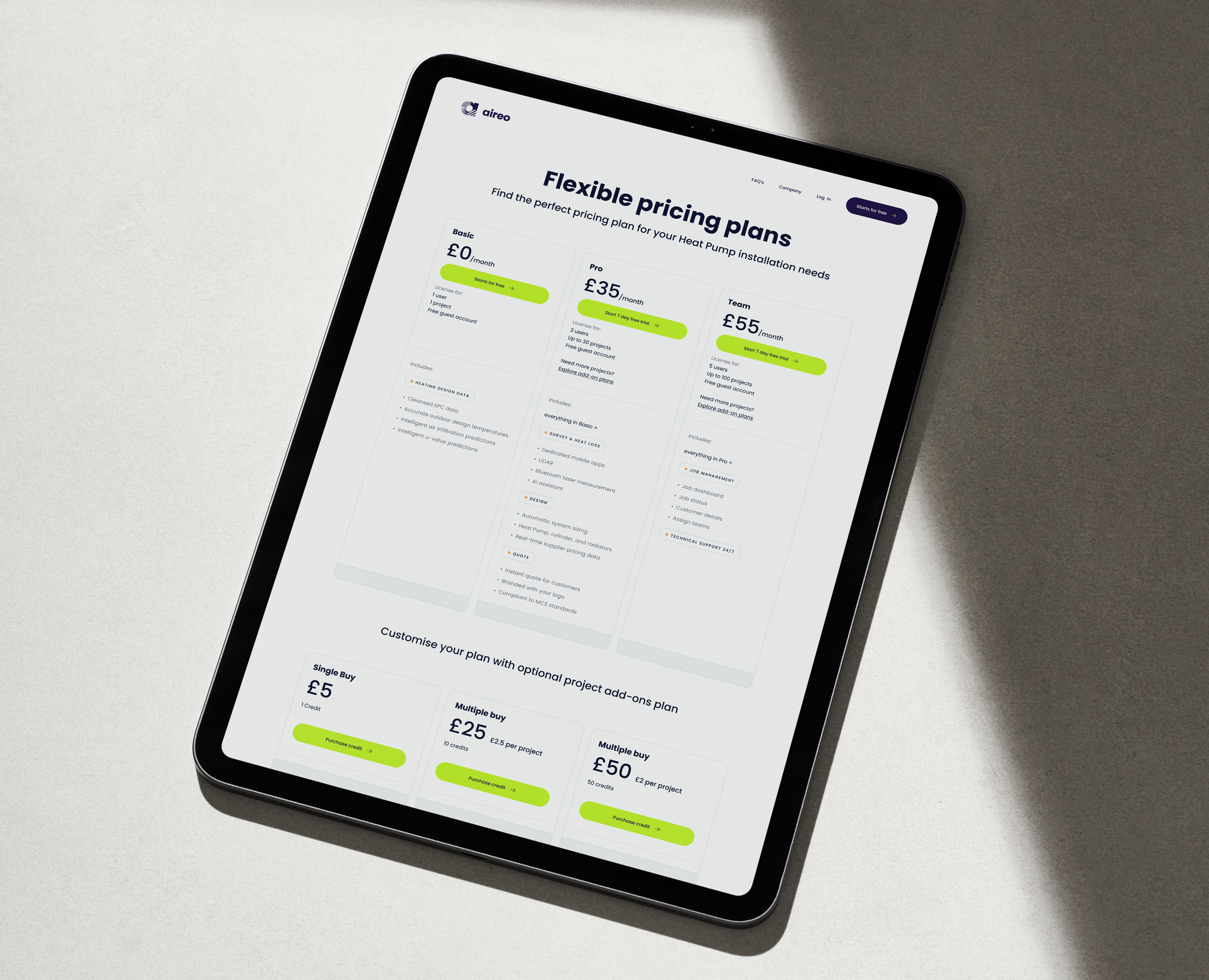The UK government aims to decarbonise domestic heating by incentivising the replacement of gas and oil boilers with air-source heat pumps (ASHPs), under the Boiler Upgrade Scheme. This ambition has its challenges: the installation process for ASHPs is more complex and slower than for gas boilers, increasing the risk of errors and inefficient heating systems.
Data and AI-driven approaches can mitigate these challenges. Using accurate and reliable statistical data, installers can make better decisions, design more efficient systems, and streamline the installation process. This ultimately leads to improved performance, energy efficiency, and thermal comfort for homeowners.
The project
As part of a cross-functional design team, I worked with a UK tech startup to develop a SaaS platform that leverages AI to provide accurate and reliable heating data. The goal was to make the end-to-end process as easy as possible for both customers and installers.
My role was two-fold
1. Design an optimised, friction-free user experience for installers
2. Develop the go-to-market strategy to ensure a successful launch
Insight
Our research told us that gathering accurate heat loss calculations during on-site surveys is prohibitively difficult. Yet, most air source heat pump (ASHP) design software relies on installers manually entering accurate data.
Traditional methods of accessing heating design data often involve costly subscriptions or complex software. We aimed to change that.
A simple, guided experience
By focusing on usability and leveraging innate behaviours, we designed a simple, guided experience that aligns with installers' mental models. By simply inputting a postcode, installers can quickly access accurate, reliable heat loss calculations data.
AI intelligence can help provide clean and reliable data. However, human experience is crucial to understanding user intent, whether they're seeking a quick overview or a deep technical dive - what I call the 'skim, swim, or dive' principle. This human touch is essential for contextualising and presenting information in a way that is both accessible and informative.
Building confidence with installers
When launching a new product into the market, we knew we had to build confidence with the installer base. A user-friendly experience was critical, as was implementing a “Freemium” strategy and leveraging the power of "Try Before You Buy" principles.
By offering installers free access to AI-powered heat loss calculations data retrieval, we allow them to experience the product's benefits firsthand without any upfront commitment.
To build confidence in our product and foster a community of users, we launched a free, three-month pilot program. This allowed us to gather valuable user feedback and make necessary improvements. To encourage users to continue using our product beyond the trial period, we offer discounted pricing plans for paid subscriptions








